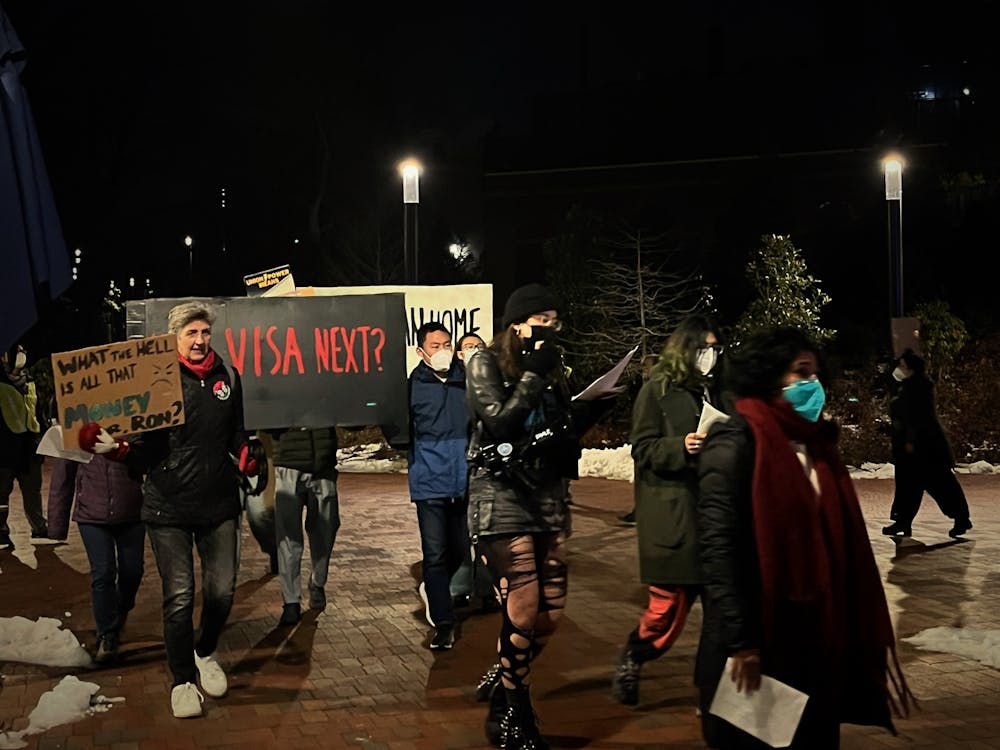If you’ve ever traveled from Homewood Campus to Fells Point, you’ll know how hard it can be to get to certain parts of Baltimore without shelling out money for an Uber. The Blue Jay Shuttle only offers rides within a limited radius, making it difficult to get to neighborhoods in East, West and South Baltimore. But, there’s an alternative to calling a shuttle or an Uber — Baltimore has a public transportation system. Why don’t we use it more often?
A big part of the story is the lack of reliability and routes offered by Baltimore’s buses, trains and subway system. For many residents, the lackluster public transit infrastructure doesn’t just mean limited options for places to go on a night out: It jeopardizes employment opportunities and decreases economic mobility. A 2021 report from the Bloomberg School of Public Health found that 100% of jobs in the Baltimore region can be reached in one hour by car, but that statistic plummets to 9% when public transit is the mode of transportation.
Although 40% of essential workers in the Baltimore region rely on public transit, according to the Transportation Alliance’s 2023 Transportation Report Card, the city earned a D for reliability and a D+ overall. This lands Baltimore in the bottom third of its peers for transit reliability. Obviously, improved transportation is necessary for improving the quality of life of Baltimore residents, but improved city-wide transportation would improve the experiences of Hopkins students, too, by creating more opportunities to engage with the city.
The Hopkins bubble refers to students’ tendency to stay within the physical boundaries of the University and is aggravated by the shortcomings of public transportation. The bubble is just one of the many consequences of the city and the University’s long history of intentionally restricting opportunities along lines of race and economic status.
The “Black Butterfly” is a term coined by professor Lawrence Brown at Morgan State University and refers to the predominantly Black, lower-income neighborhoods across East and West Baltimore. Bus routes, like many other resources in Baltimore, are concentrated in the affluent “White L” between the butterfly, where the University’s campuses are located. A functioning public transportation system is just one essential step to solving existing inequities.
Though efforts have lagged, recently there has been some progress. Governor Wes Moore dedicated $500 million to transportation as part of his 2024 budget plan. The Red Line Project to connect East and West Baltimore, which was canceled by Governor Larry Hogan in 2015, was also recently relaunched by Moore.
Hopkins, as a leading research institution and the largest employer in Baltimore, should be committed to improving the city’s public transportation. The University was recently selected by the U.S. Department of Transportation to lead a $10 million center for climate-focused transportation solutions, and we hope that our city reaps the benefits.
The tenth goal of the University's newly established Ten for One Strategic Framework aims to “Develop a new generation of partnerships and programs to support the aspirations of our neighbors and generate economic opportunity for the city of Baltimore.” A functioning public transit system is crucial to economic growth, and the University will fall short of reaching this goal without one.
Between its own campuses, Hopkins has built a (mostly) reliable transportation infrastructure, including the JHMI, the Blue Jay Shuttle and various other routes around the city. These buses are only available to Hopkins affiliates, and many students favor the Hopkins buses over existing city transportation, which is plagued by issues. We at The News-Letter believe the University should invest in improving public transportation not just for Hopkins affiliates, but for all residents.
Hopkins cannot fully right its wrongs, but it should be devoted to reconnecting the city it once helped divide.





